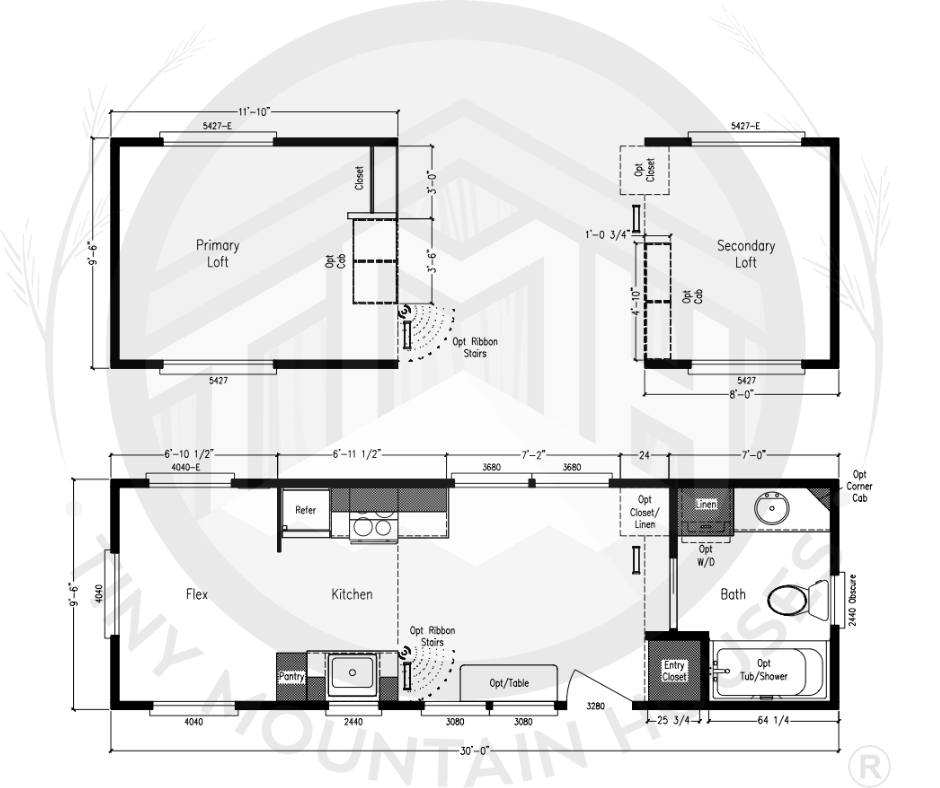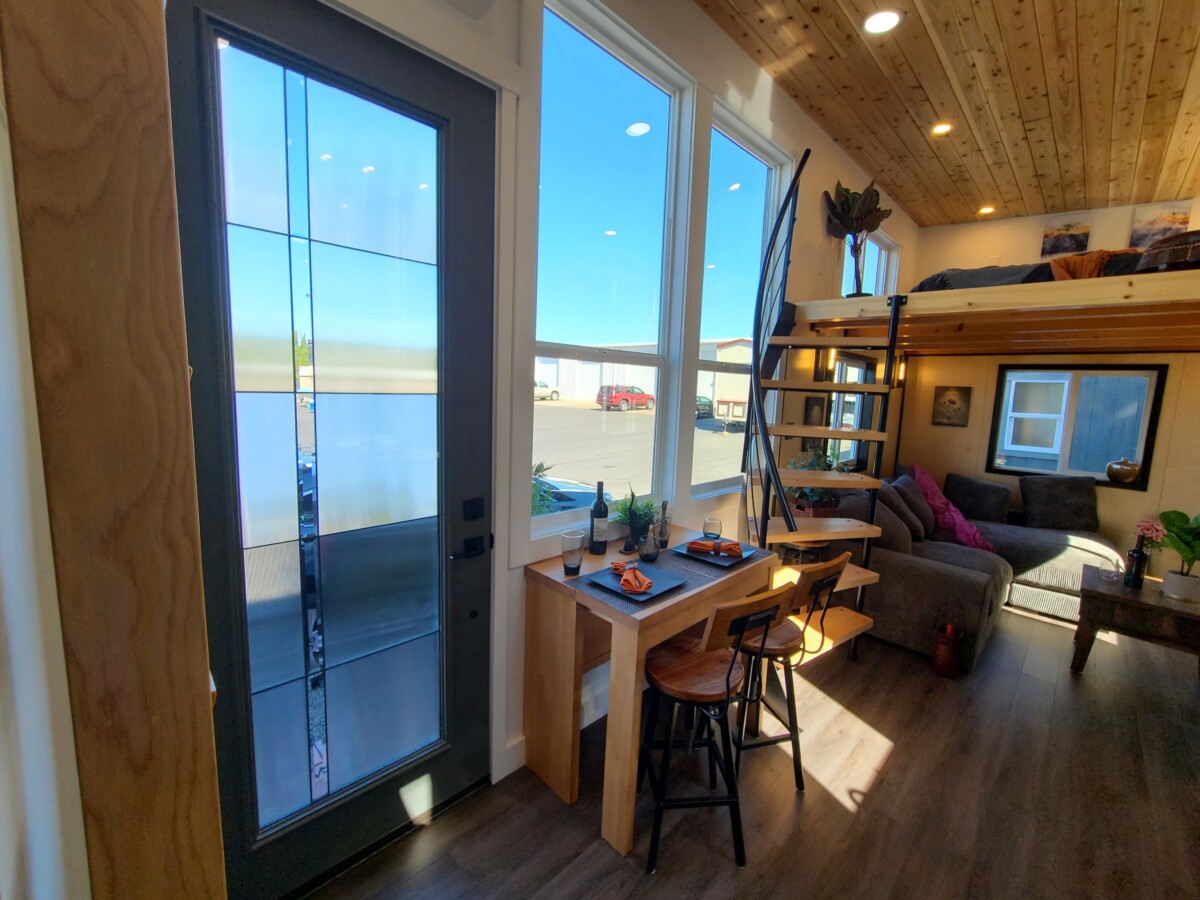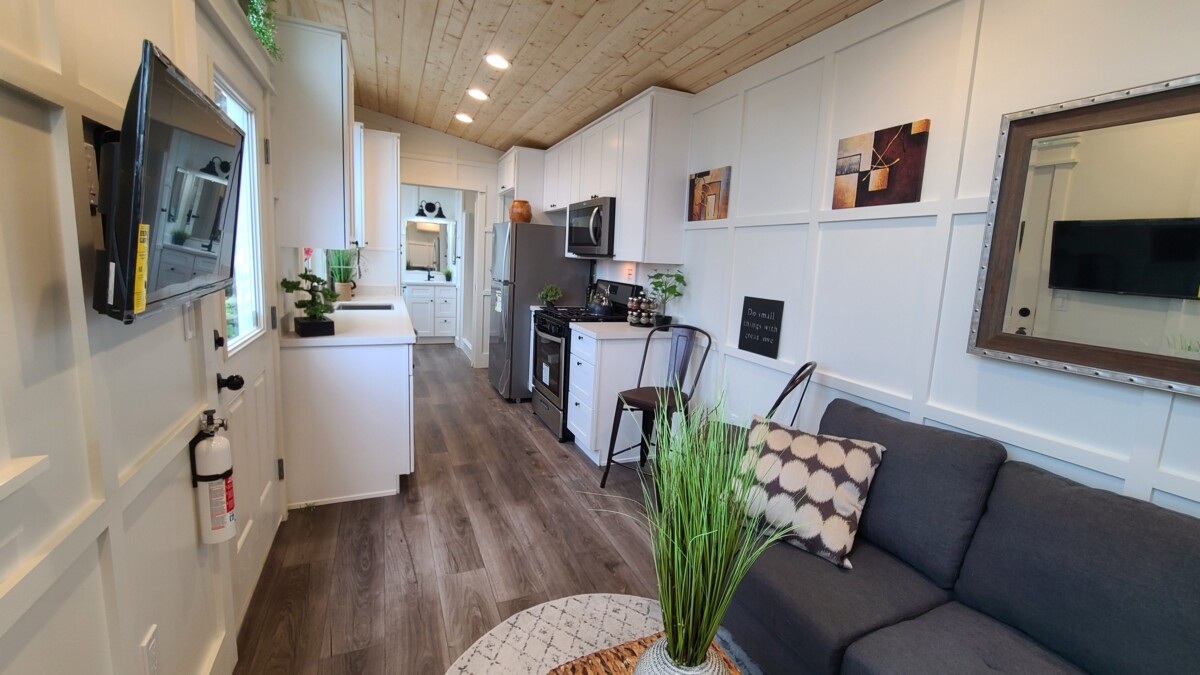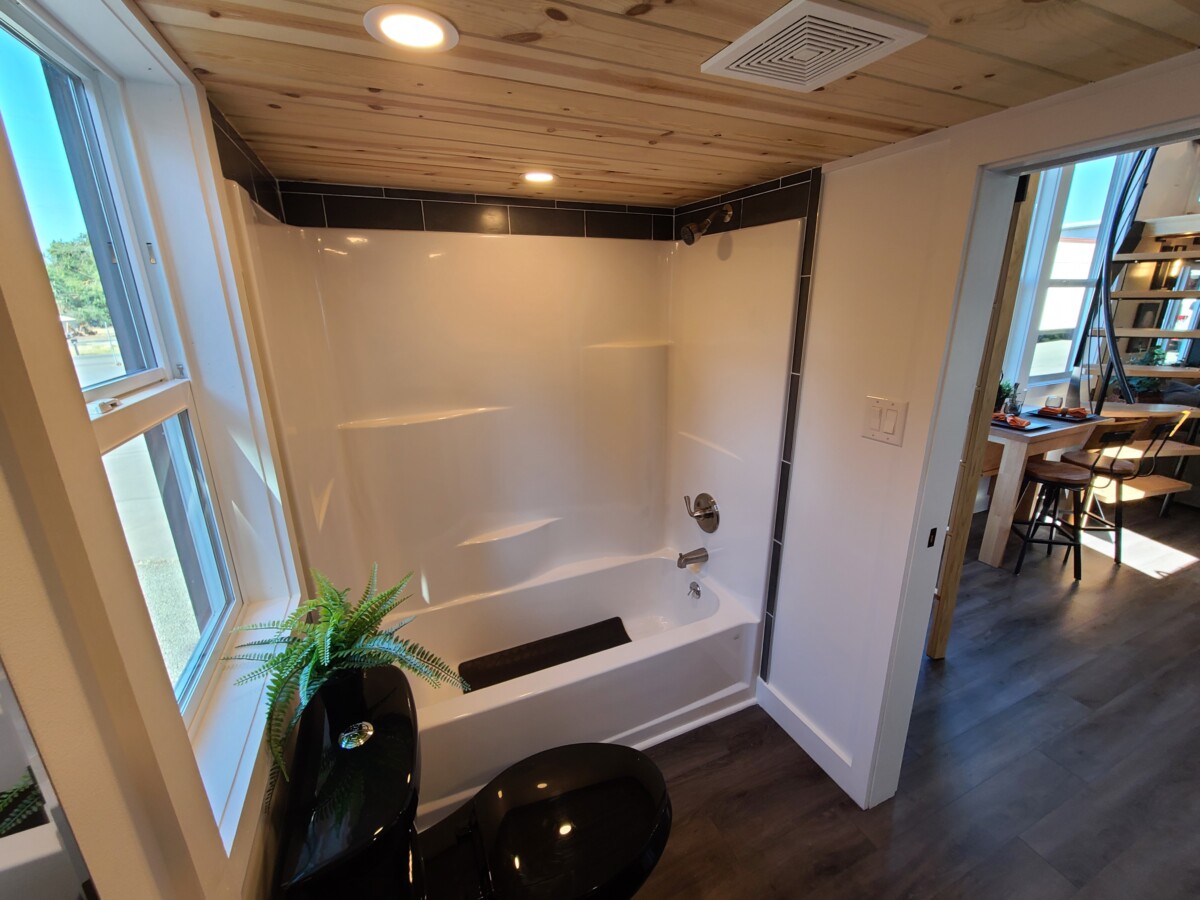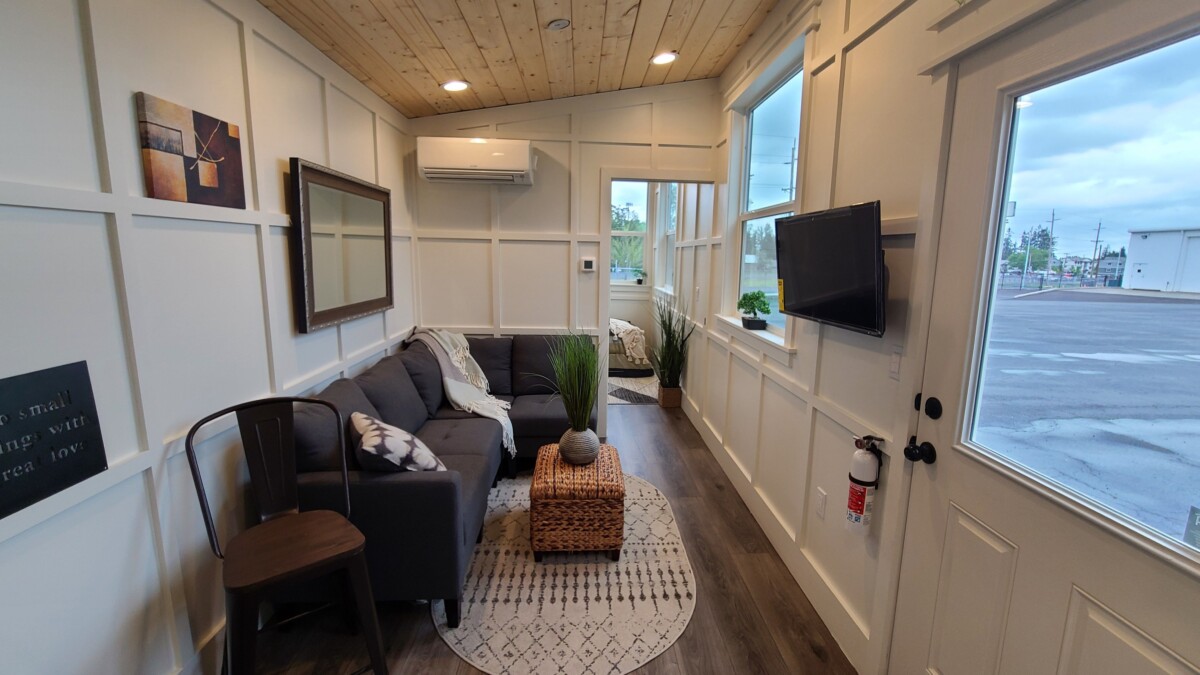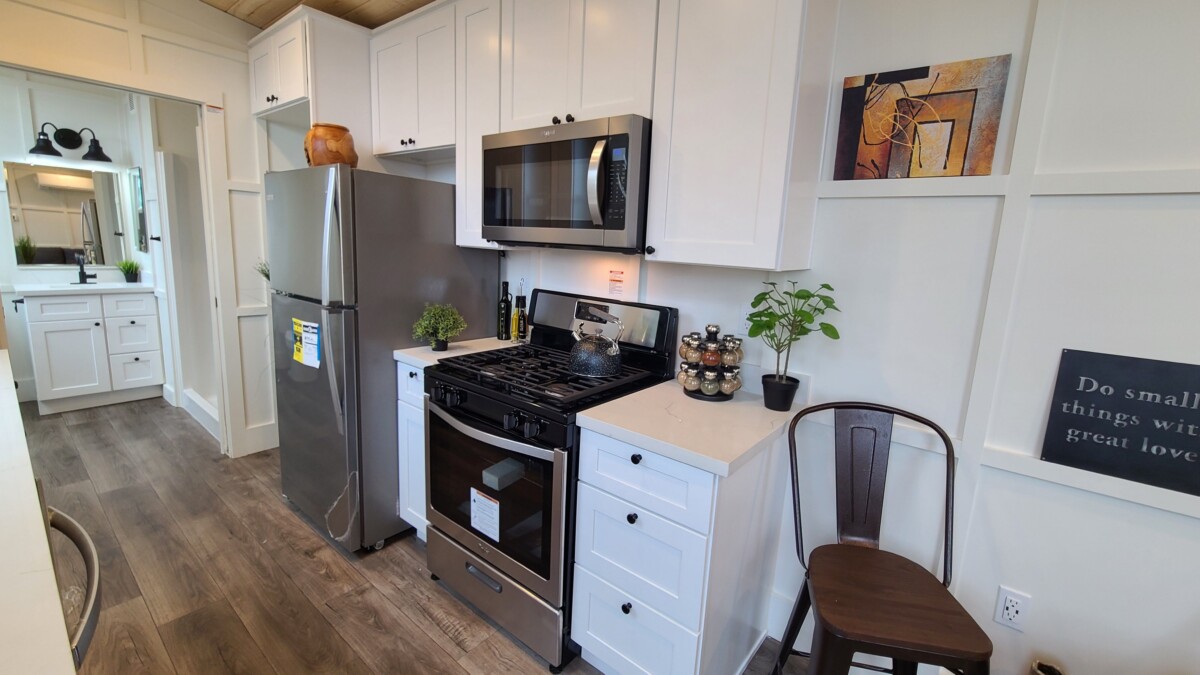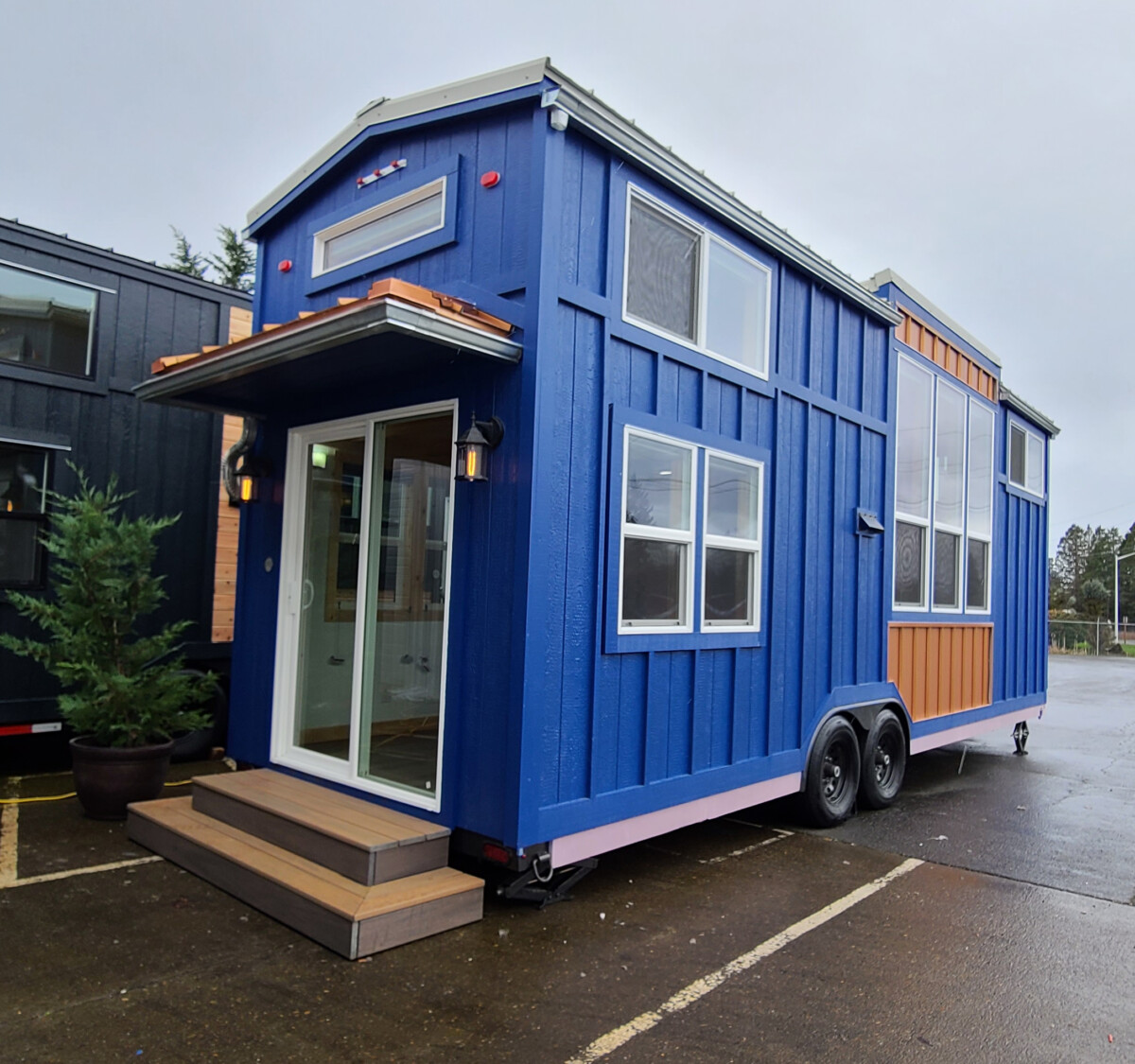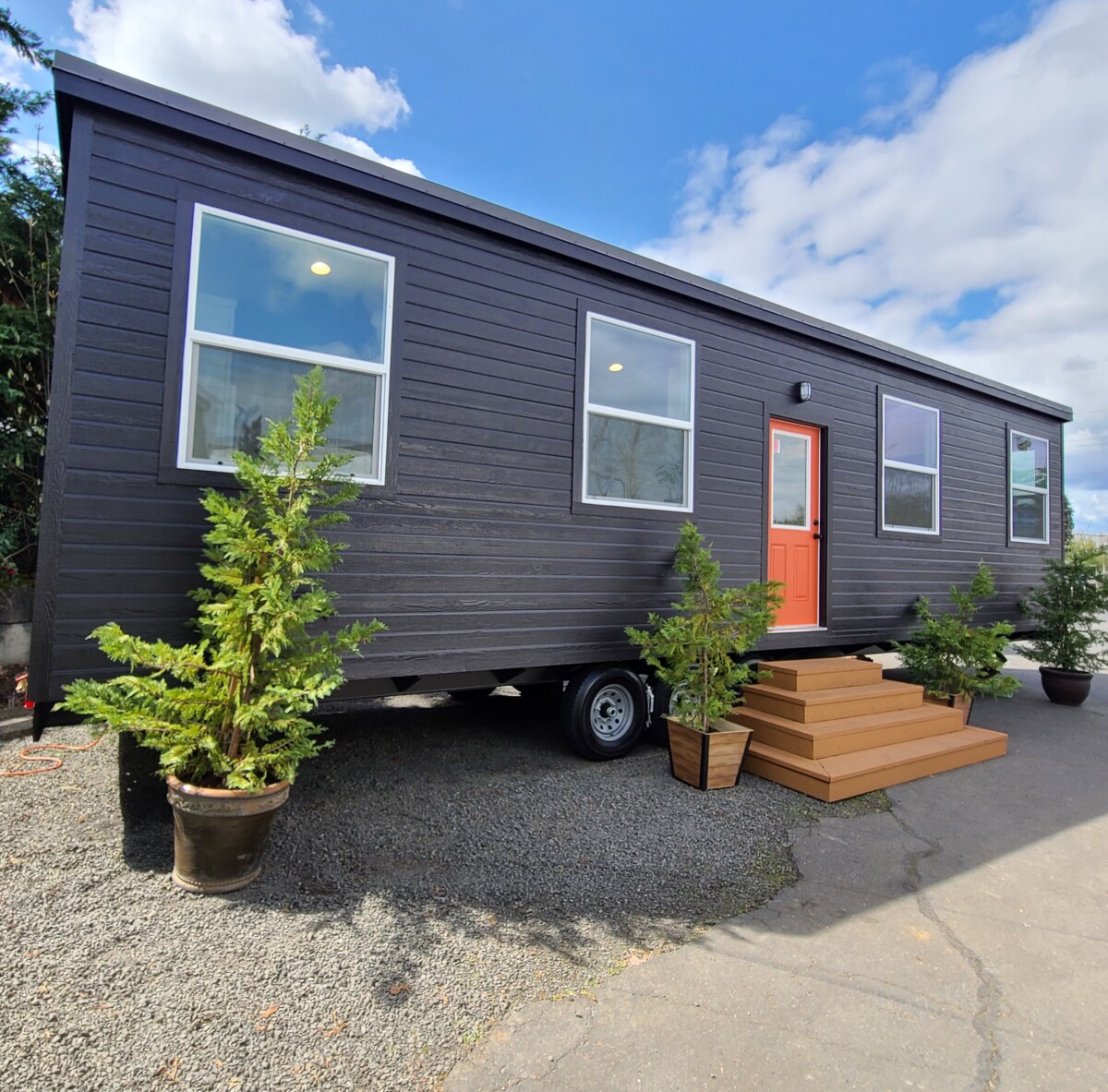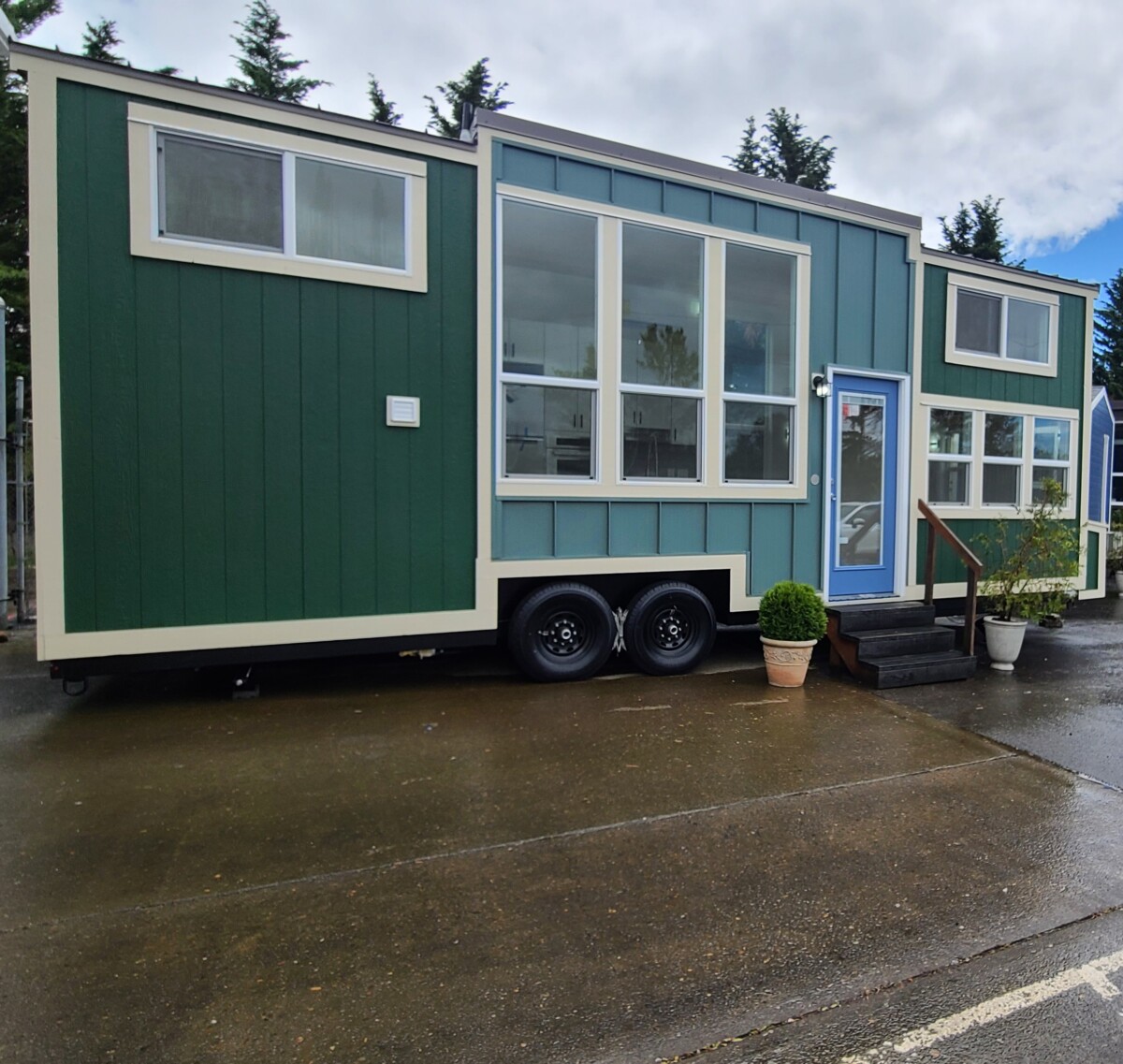Tiny Houses In Santa Cruz County
The tiny house movement is alive and well in Santa Cruz! Now is a great time to make the move and join the tiny house movement! With a tiny house in Santa Cruz California, you can reap the many benefits of owning a tiny house on wheels! Thanks to ordinance 5413 tiny houses can be placed and lived in as a primary residence as well as an auxiliary dwelling unit (ADU)! These units are mobile, and since they are built on wheels they can be transported at will. This can be especially beneficial in Santa Cruz where there are so many scenic recreation areas! Tiny houses on wheels are environmentally friendly, all our homes are energy efficient and built to last much longer than a traditional RV or travel trailer. Finally, these tiny houses on wheels can offer a great money-saving solution. These units are a great way to save funds and gain financial freedom vs a traditional home. Overall, tiny houses on wheels can offer a flexible, sustainable, and affordable housing option for residents of Santa Cruz.
What is a Tiny House on Wheels?
This is a question we get fairly often and is often the topic of debate. According to the County of Santa Cruz, a tiny house is an unmotorized vehicle that can be towed on public roads. These vehicles must be registered annually with the DMV. These vehicles can’t exceed 14’ in height and are typically no larger than 400 square feet in size. (not including a loft areas)
Floor-plans for Tiny Homes on Wheels
Tiny Mountain Houses offer a variety of floor plans for our tiny houses on wheels to meet your needs and your lifestyle!
Floor-plans for Tiny Homes
Our floor plan offerings vary, we offer traditional lofted models as well as units with all single-level living. Our sizes range from as short as 18’ to as long as 40’. We aim to push the limits of tiny house design and often incorporate things rarely seen in tiny houses, like claw foot bathtubs, high-end appliances, custom handcrafted furnishings, and much more! See all our floor plans and pricing by clicking the link.
How much does a tiny home cost in Santa Cruz California?
The cost of a tiny house can depend on several factors including layout, appliances, finishes, as well as furnishing in some cases. We post all our base prices for our models online, these units come completely finished and turn key ready to be lived in. To find out what comes in each model visit the model page and review the specifications at the bottom of the page. To get a quote on your home with the options you are after contact us today!
What is the Process for Getting a Tiny Home?
Overall, buying a tiny house on wheels requires careful research, planning, and decision-making. However, the end result can be a unique and sustainable home that meets your needs and lifestyle. We will go into details of the process below:
Research Your Tiny Home
It is always important to take time to choose a qualified trustworthy builder to construct your tiny house on wheels. The first step is to decide what layout you want in your tiny house or what things are most important to you in your build. That way you can convey that to the builder early and it will be a focal point. When researching builders it is often times helpful to ask for references from previous builds and possibly some pictures and videos as well. Once you find a builder that constructs what you are after and get a quote of the exact cost.
Funding Your Tiny Home
Once you know how much your tiny home will cost you will need a way to pay for the home. If you are paying cash see what your builder’s terms are and pay for the home. If the home is going to be financed there will be extra steps depending on the lender. Often times the lender may request a purchase agreement or additional paperwork. Each lender is different so let your us know who you intend to work with and they will help you appease them from there.
Ordering Your Tiny Home
Once the funds are in order you are ready to place an order on your tiny house. Connect with us and finalize all the paperwork and get your home slotted for production. At this time we will decide on all colors finishes etc so you will know exactly what your tiny house on wheels will look like inside and out. As the build begins we will send you pictures and updates along the process
Installing Your Tiny Home
Once the home is completed it will need to be delivered to its location and connected to utilities. The home is usually transported to the location by us and as long as we can access the site we can help level the unit as well. Once the home is set utilities should be connected and tested. In some cases, certain utilities will need to be connected by a professional. Next all that’s left is to enjoy the tiny house lifestyle!
Our Tiny House Warranty for Santa Cruz
At Tiny Mountain Houses we want to provide you with the peace of mind of knowing your home is covered! That is why we offer a 1-year manufacturer’s warranty on all the craftsmanship we construct. Additionally, all the components we use are brand new and have been thoroughly researched for tiny house applications. All those components are warranted by their manufacturers as well with warranties lasting as long as 40 years on some components like roofing and siding!
Frequently Asked Questions
Have a question? You aren’t alone, take a look at our FAQ’s below. If your question is still unanswered feel free to contact us using the form on this page.
Are tiny homes legal in Santa Cruz, California?
Yes! A tiny house on wheels or THOW can be used as either a auxillery dwelling unit (ADU) or as a primary residence in Santa Cruz County! Accoording to ordinance 5413 the THOW space must meet the following reuirements:
(1) THOW Location on a Parcel.
(a) The THOW as an ADU shall be detached from the primary dwelling unit.
(b) A THOW shall not be located in an existing driveway.
(c) Parking Pad.
(i) Bumper guards, curbs, or other installations shall be adequate to
prevent movement of the THOW.
(ii) The wheels shall not be removed and the parking pad shall be a
level surface paved with two inches of asphalt concrete over five inches
of Class II base rock or equivalent permeable or nonpermeable surface
so as to provide a durable, dustless surface, and shall be graded and
drained so as to prevent erosion and disperse surface water
(2) Access.
(a) The THOW parking pad shall be accessible by a path of travel such that
the THOW is towable onto and off the property
(3) Size.
(a) The maximum size is as required to allow for towing on public roadways,
but not to exceed 400 square feet.
(4) Development Standards.
(a) Meet all development standards in 13.10.681 and the maximum height of
a THOW shall be as established by the California Department of Motor Vehicles
for towing on public roads, but not to exceed 14 feet.
You can read the code in it’s entirety HERE
How many are allowed per parcel?
Currently, only 1 THOW is allowed per parcel. The unit can be used as a permanent residence or an ADU as long as the parcel does not exceed it’s total number of dwelling units does not exceed the total number of dwellings allowed by state and local regulations.
Can I park a THOW in my driveway?
No, currently tiny homes on wheels cannot be placed in a driveway for an extended amount of time. The THOW should be placed somewhere it can be towed into place without major obstructions such as low hanging trees, power lines, fences, etc.
What utilities are required?
According to the County of Santa Cruz website the Tiny House On Wheels (THOW) must comply with the latest edition of the California Plumbing Code and local ordinance by being connected to an approved water source and sewage disposal facility, whether it’s a sewer or septic. While composting toilets are permitted, they must be used in conjunction with an approved onsite sewage disposal facility or connected to a public sewer.
To comply with the latest edition of the California Electrical Code and local ordinance, the THOW must be connected to a source of electricity. If it’s not connected to the local electric utility power source, it may use an off-grid system designed to provide enough power for expected loads. All off-grid systems must have solar panels and battery storage. Within the Urban and Rural Service Lines, the THOW can’t rely on a generator as a primary or stand-by source of electric power. Outside the Urban and Rural Service Lines, the THOW can’t rely on a generator as a primary source of electric power, but provisions for connection to a generator can be included and must meet all requirements of the California Electrical Code and local ordinance. The generator used outside the Urban and Rural Service Lines must be a stationary emergency stand-by generator as defined in, and in compliance with all provisions of, SCCC 13.15 Noise Planning.
How large can a tiny house on wheels be?
Tiny houses can range in size based on their application. In order to transport a home down the road it must be under 14’ in height and typically about 400 sq ft. All our units are under this limit to add to the flexibility of our builds.
